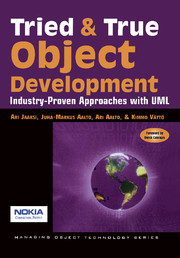Book contents
CHAPTER 1 - DEVELOPING INTERACTIVE SOFTWARE SYSTEMS
Published online by Cambridge University Press: 06 July 2010
Summary
Most modern software systems are interactive by nature. Systems communicate with a variety of external elements, such as end users, databases, printers, networks, and sensors. These entities communicate with the software systems by sending and receiving various types of events. Events emerge randomly and the systems must always be ready to handle them. The majority of software systems are thus event-driven. Communication is flexible; it is the interaction among these entities that typically is the most critical element of a system. Thus, software systems must handle events coming from various sources, and the main concern of software developers is developing applications that provide smooth communication with the outside world.
On the other hand, systems are just tools for end users. End users perform certain tasks with a system. The primary goal of the end user, for example, is to write a letter, to finalize the balance sheet of a company, or to send an e-mail. Thus, although events come from various sources and a system must respond to them, it is the end users who typically are in charge. The most important task of almost any system is to serve the end users. In this respect, the main concern of a software developer is to develop applications that provide the best possible support for the needs of end users.
Our process model aims at producing software systems the end user can use effectively. To implement such systems, we model software systems and their users as collaborative entities. The software development process consists of analysis, design, programming, and testing activities. This chapter discusses these activities and offers some examples.
- Type
- Chapter
- Information
- Tried and True Object DevelopmentIndustry-Proven Approaches with UML, pp. 1 - 106Publisher: Cambridge University PressPrint publication year: 1998

